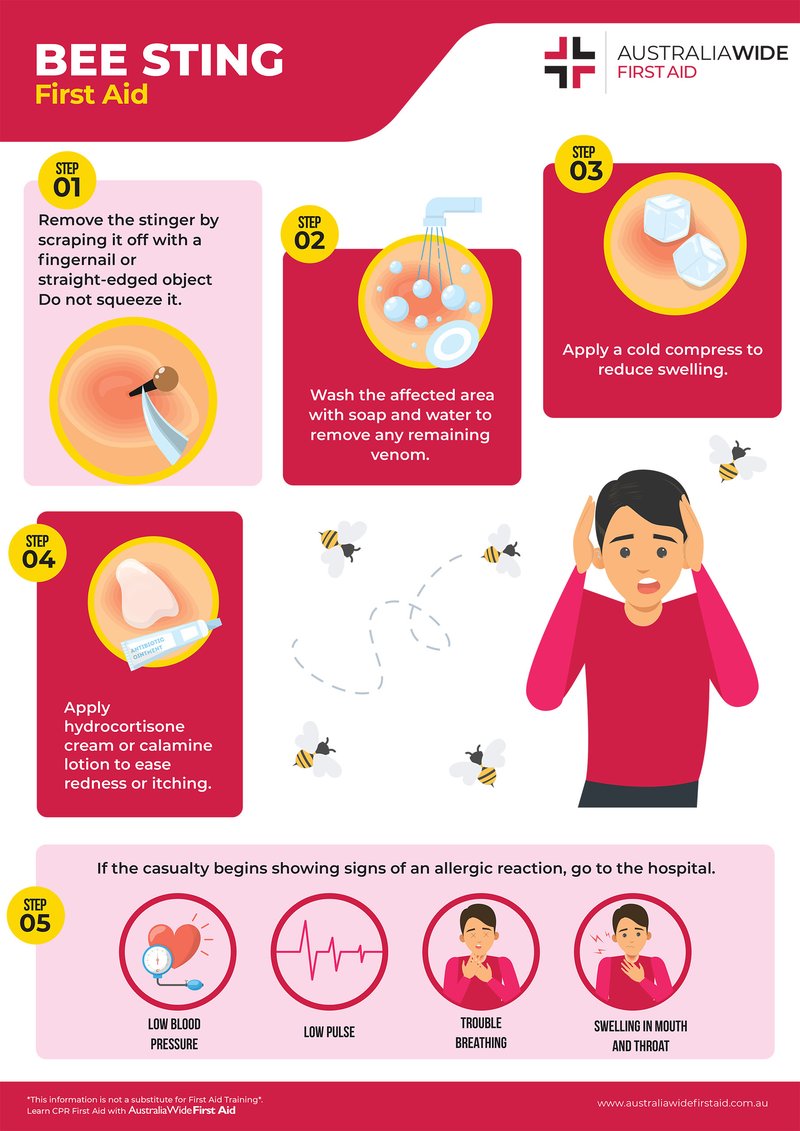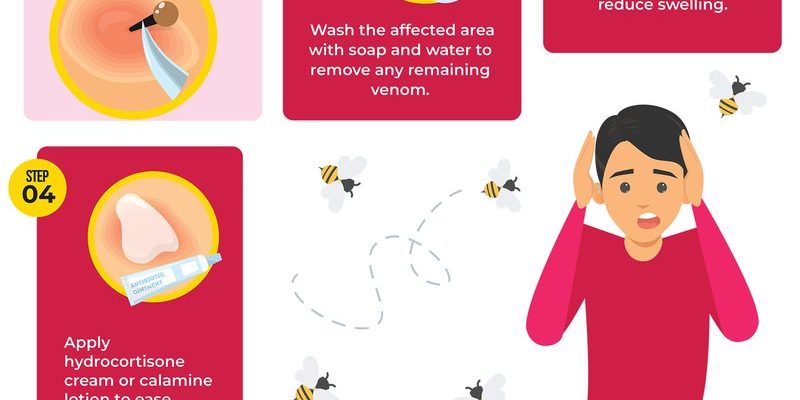
So, what happens when a bee stings you? The sting is their way of defending themselves, and it leaves behind venom that can cause a range of reactions. Some people might barely notice it, while others could face serious allergic reactions. Let me help you navigate the world of bee stings, covering everything from immediate treatment options to understanding allergies and administering first aid.
What Happens When You Get Stung by a Bee?
When a bee stings you, it uses its stinger, which is actually a part of its reproductive system. This stinger is barbed, meaning it often remains lodged in your skin, releasing venom. You might feel an instant sharp pain, followed by a burning sensation and possibly some swelling. The venom contains proteins that can affect your skin cells and immune system, which is why a reaction occurs.
You may notice a small, red bump at the sting site, which might itch or feel warm to the touch. Honestly, while most reactions are mild, about 1 in 3 people experience more intense symptoms like swelling beyond the sting site or even hives. This is your body’s way of reacting to the venom. It’s like your immune system is trying to sound the alarm, saying, “Hey, something’s not right here!”
Immediate First Aid for Bee Stings
If you or someone nearby gets stung, there are a few simple steps to follow to ease the pain and minimize the reaction. First things first, if you see the stinger still in the skin, gently scrape it out with something like a credit card. Don’t use your fingers, as you might push more venom into the skin.
After that, wash the sting area with soap and water to prevent infection. You can apply a cold pack or a cloth with ice to the area for about 10 minutes to reduce swelling and pain. Remember, it’s essential to monitor the person for any signs of a severe allergic reaction, especially if they have a history of allergies. Here’s a quick overview of first aid steps:
- Remove the stinger if it’s still there.
- Clean the area with soap and water.
- Apply a cold compress to reduce swelling.
- Take pain relievers like ibuprofen if needed.
Recognizing Allergic Reactions
Now, you might be wondering, “How do I know if I’m allergic?” Allergic reactions to bee stings can range from mild to severe. Mild reactions might just include some swelling and redness, but a severe allergic reaction—known as anaphylaxis—can be life-threatening.
Signs of anaphylaxis include difficulty breathing, swelling of the face or throat, rapid heartbeat, and dizziness. If you notice these symptoms, it’s crucial to seek emergency medical help immediately. Anaphylaxis can occur within minutes after a sting, so don’t wait.
If you know you have a bee sting allergy, it’s a good idea to carry an epinephrine auto-injector. This little device can quickly deliver medicine to counteract the allergic reaction. It’s like having a safety net in case anything goes wrong.
Treatment Options for Bee Stings
Once the immediate panic of a bee sting has passed, you might want to consider treatment options to alleviate discomfort. Over-the-counter (OTC) medications like antihistamines can help reduce swelling and itching. Example brands like Benadryl are widely used for this purpose.
If you prefer natural remedies, applying a paste of baking soda and water can also help neutralize the venom and ease pain. Aloe vera is another great option, known for its soothing properties. Just think of it as your natural ice pack, gently easing the sting while keeping your skin hydrated.
For severe allergic reactions, you might need to consult a healthcare professional for additional treatments. They could prescribe stronger medications, like corticosteroids, to help manage inflammation.
Prevention Tips to Avoid Bee Stings
Prevention is always better than cure, right? Here are some practical tips to avoid getting stung by bees:
- Avoid floral prints: Bright colors and floral patterns can attract bees.
- Stay calm: If a bee comes near you, try not to swat at it.
- Wear closed-toed shoes: This can protect your feet, especially when walking in grassy or flower-filled areas.
- Keep food covered: Bees love sweet stuff, so cover your snacks when outdoors.
By keeping these tips in mind, you can enjoy your time outside without worrying too much about bee stings. Just remember, bees are essential for our ecosystem, so let’s coexist as harmoniously as we can.
What to Do After a Bee Sting
Once you’ve treated a bee sting, you might wonder what comes next. Just rest and keep an eye on the sting site. Over the next few hours to days, watch for signs of infection, such as increased redness, warmth, or pus. If any of these symptoms occur, it’s time to visit a healthcare provider.
You might also consider keeping a record of your reactions to bee stings. This is especially helpful if you experience repeated stings. And if you have an allergic reaction, it’s vital to communicate this with your healthcare provider so they can guide your treatment plan moving forward.
Remember, understanding your body’s response to bee stings empowers you to manage the situation effectively.
In Conclusion
Bee stings may be unpleasant and sometimes even scary, but knowing how to treat them and recognizing allergic reactions can make all the difference. With a little first aid knowledge and preventative measures in place, you can enjoy the great outdoors while coexisting with our buzzing little friends. Always prioritize safety, and don’t hesitate to seek help if needed. After all, being prepared is your best defense against those surprise punchlines from nature!

